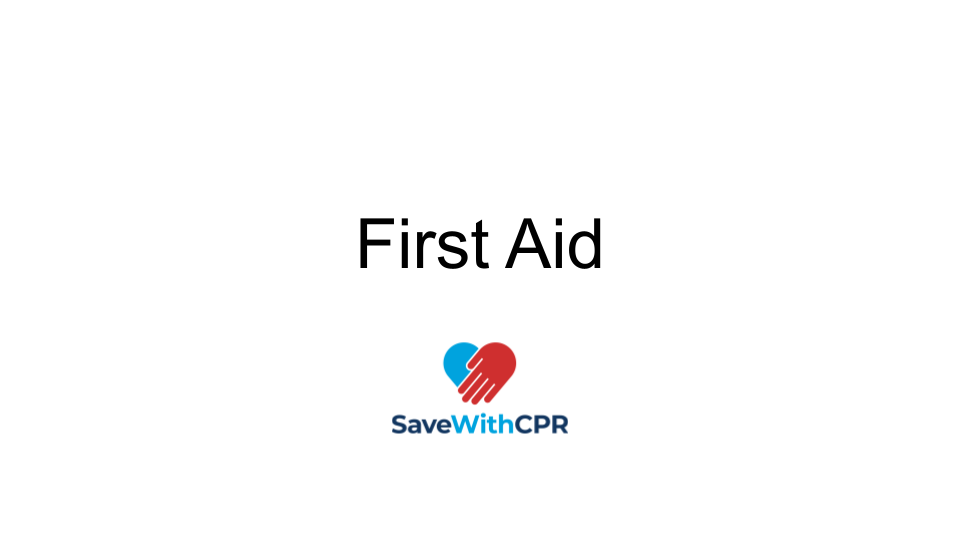Welcome to the Save With CPR First Aid Course! This course will teach you the fundamental skills needed to recognize and respond to a variety of medical and trauma emergencies. Our goal is to equip you with the knowledge and confidence to provide immediate and effective first aid care, ensuring both the victim’s and your own safety.
OSHA Compliance
It’s essential to recognize that while the Save With CPR first aid curriculum broadly addresses OSHA first aid requirements, it may not encompass every specific detail pertinent to your workplace. As an instructor, it’s crucial to tailor the training to include hazards that are relevant to the workers you are educating. Additionally, it’s important to ensure that your students practice hands-on skills related to injuries they are most likely to encounter.
Outcomes
By the end of this course, you will be able to:
- Recognize an Emergency Situation: Learn to identify an emergency and differentiate between medical and trauma emergencies.
- Activate EMS: Know how to call Emergency Medical Services, stay safely with the victim, and appropriately answer questions from emergency medical dispatchers.
- Provide Basic First Aid: Apply fundamental principles of first aid to assist victims of medical or trauma emergencies while ensuring the rescuer’s safety.
Intended Audience
This course is ideal for:
- First Responders: Firefighters, police officers, and emergency medical technicians who are often the first on the scene of an emergency.
- Childcare Providers: Daycare workers and babysitters who care for children and need to be prepared for medical emergencies.
- Parents and Guardians: Individuals who want to be prepared to provide first aid in emergencies at home or in the community.
- Teachers and School Staff: Educators, school nurses, and administrative staff who may need to respond to emergencies in a school setting.
- Fitness Trainers and Coaches: Professionals in gyms, sports facilities, and schools who want to be prepared to assist in case of an injury.
- Workplace Safety Officers: Individuals responsible for ensuring the safety and well-being of colleagues in various industries.
- General Public: Anyone who wants to be prepared to provide first aid in an emergency, whether at home, work, or in the community.
Approvals
All Save With CPR training courses meet or exceed local and national guidelines such as OSHA and ILCOR standards. However, please verify with your local licensing authorities or organizational leadership for specific requirements. If you need assistance, we are happy to help with confirmation or consultation.
Why Take This Course?
In an emergency, every second counts. This course equips you with the skills and confidence to provide immediate and effective first aid, potentially saving lives and preventing further injury. Whether for professional development or personal preparedness, knowing how to respond to medical and trauma emergencies can make a critical difference.
Become an Instructor
Interested in teaching others these valuable skills? You can become an instructor with Save With CPR by visiting Become an Instructor. For a fixed low monthly fee, you will gain unlimited access to all training materials, including videos, instructor training, and student manuals. This opportunity is perfect for those looking to reduce training costs internally or start a new side hustle as a first aid instructor.
